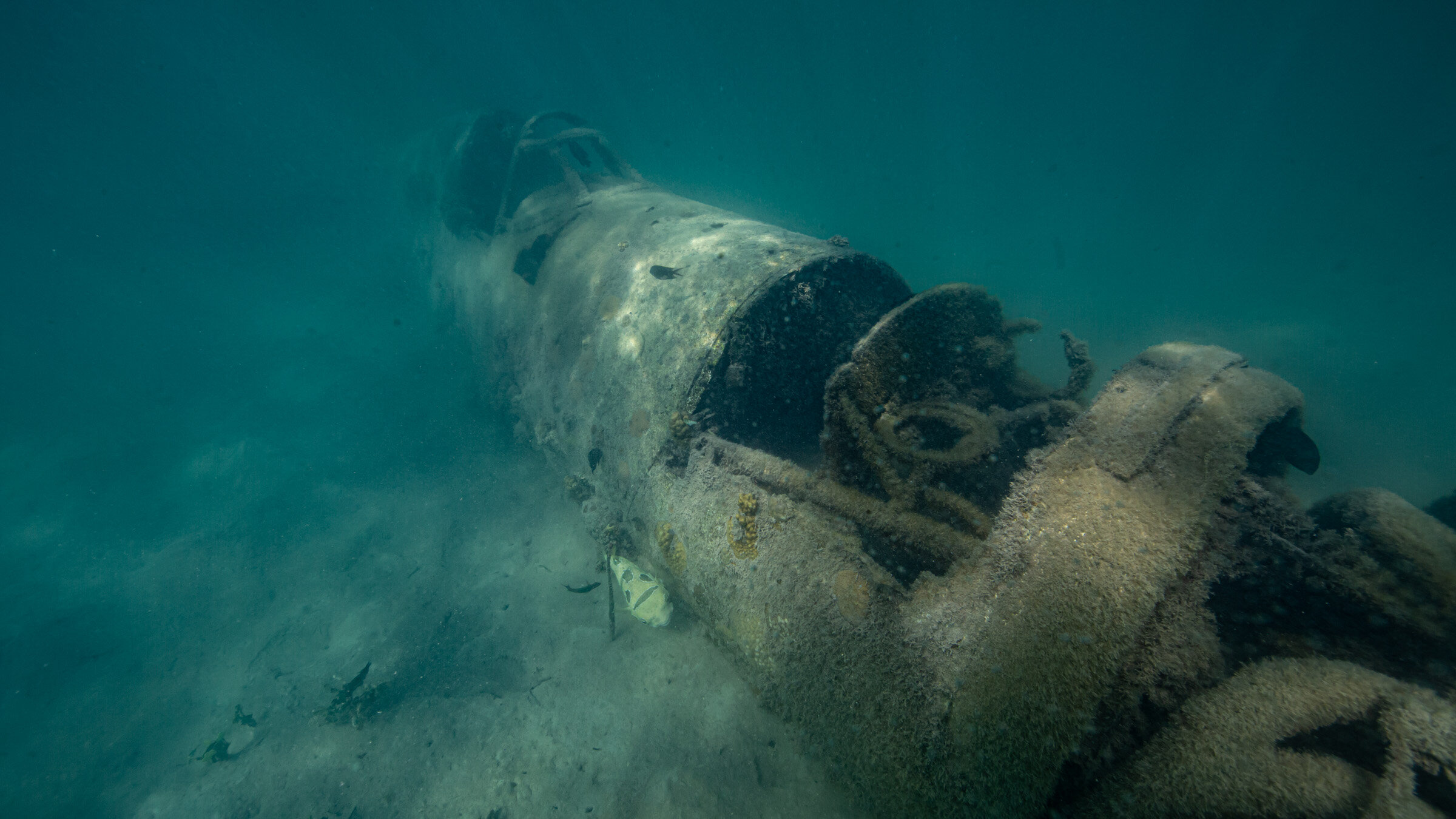Erik Tom’s Corsair - Vanuatu
Hello again
I mentioned in my previous blog, that Andrew had an opportunity to photograph a wrecked American WW11 Aircraft. I want to pay tribute to Tasaruru Tom and his son Erick who, for decades, have watched over this aircraft, honoured her memory and kept her story alive.
By 1942 the Americans had a strong military presence in the New Hebrides (now Vanuatu). However, the Japanese wanted the heavily fortified group of islands and in spite of heavy losses in the Solomon Islands, the Japanese were prepared to fight (and sacrifice more of their men) for sole occupancy.
Tasaruru Tom was 19 years old when war came to his home island of Ni Efete. Day by day he witnessed the aerial dog fights between the American and Japanese fighters and many a time, watched in horror as the planes crashed (and burned) close to his village.
On 5th May 1944, Tasaruru saw three F4U-1 American Corsair Aircraft skim the tree tops close to his village. As Tasaruru watched the Corsairs disappeared, he knew all three aircraft had crashed into the sea.
“Second Lt James A. Vittitoe was returning from a long training mission. His F4U-1 Corsair was dangerously low on fuel. Even though he was close to Quoin (his home airfield), he knew his aircraft wouldn’t make it. He ditched his stricken plane in a shallow lagoon close to land.”
Second Lt Stanislow Keywie was also on the same mission. As his aircraft coughed and spluttered, he lined up the mangroves, gently set his plane down in the shallows and waded to shore. The third Corsair ditched in deeper water and quickly disappeared.
Tasaruru saw the aircraft ditch into the sea. He raced into the water, swam out to the stricken aircraft and lifted Lt James A. Vittitoe out of his cockpit. Fortunately, Lt Vittitoe was unharmed. They embraced and quickly swam back to shore. Second Lt Vititoe was humbled and grateful to be alive. He thanked Tasaruru for saving his life. Despite their different back grounds, the two men formed a strong bond that remained for life.
For many years, the American F4U-1 fighters remained at the mercy of the elements; as the years passed, the shifting sand, the sea creatures and strong current reduced the fighters to mere shells.
1987 the Corsair piloted by Second Lt James A Vittitoe came to the attention of the Classic Jets Fighter museum in Adelaide SA. The museum wanted to salvage the aircraft, restore it and display the jet their museum.
In 1991 Second Lt James A. Vittitoe returned to Vanuatu. He renewed his friendship with Tasaruru and together they revisited Corsair. Lt Vittitoe passed away in 1994.
In 1999, Tasrauru’s son Erick opened his WW11 museum. The museum was officially opened by the Australian High Commissioner; however, the original building was destroyed by Cyclone Pam in 2015. The WW11 relics are now housed in a ‘new tin shed’.
The museum, named in honour of Lt Vittitoe, is located on land that has belonged to the Tom family for three generations. Their plot of land is situated close to the American Air Base and in the early days Erick and his family scavenged in the base rubbish dump for WW11 items to stock the museum. Over the weeks Ericks’ family unearthed many items including, tin cutlery, plates and cups, tin hats, bullets, badges and bottles. Erick also acquired original photos, documents and maps all of which adorn the museum walls.
In 2009 Erick gave permission for Lt Vittitoe’s Corsair to be salvaged. The salvage operation was successful, and the Corsair is currently undergoing restoration at the Classic Jets Fighter Museum in South Australia.
However, of the three Corsairs who flew that fateful mission, two remain in their watery graves.
Second Lt Stanislow Keywiec’s F4U-1 Corsair still sits in the shallow lagoon where he ditched her and for a small fee Erick Tom (usually accompanied by his grandson Vittitoe) will ferry you out to her in his ‘tinny’.
The water in the lagoon is still and warmed by the afternoon sun. The Fighter sits in about 3 meters, an easy free dive or snorkel. Her wings rest in the silt and her propellers are gone. Her canopy is missing, and her cockpit lies open. There are holes in her panel where her instruments once were and her seat is a bare frame. Her guns were souvenired and her bullets pinched….however the American fighters tail sits up right and proudly defiant, a lasting testament to the pilot who flew her.
While Erick and young Vittitoe waited patiently in their tinny, Andrew and I spent almost two hours swimming, snorkelling and free diving on the an American F4U-1 Corsair that in 1944 ditched in a shallow lagoon in Vanuatu…..what an experience…what an adventure….and all caught on camera.
Erick Tom and his extended family are to be acknowledged for their commitment to the memory of Tasaruru Tom and Second Lt James A. Vittitoe. Their family owned museum is a dedication to an era that is fading fast, a small insight into a history of conflict that touched a small Pacific nation.
Andrew and I spent the day with Erick and his family. We chattered as we feasted crusty bread, cheese, tomatoes and fresh pineapple washed down with green coconut water. Erick shared with us the stories of his life and his hope of keeping (and expanding) his museum.
I highly recommend you visit Erick Toms’WW11 museum and (of cause) the F4U-1 Corsair that crash landed right on his back doorstep.
Till next time




